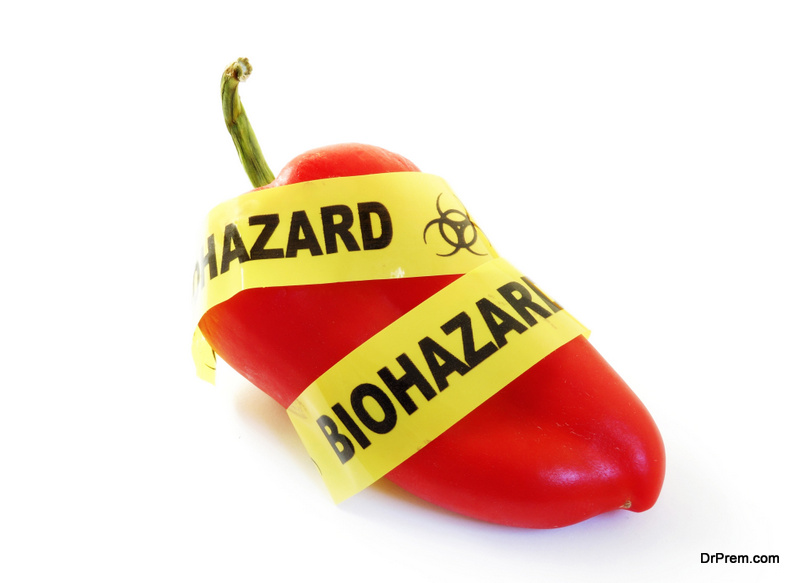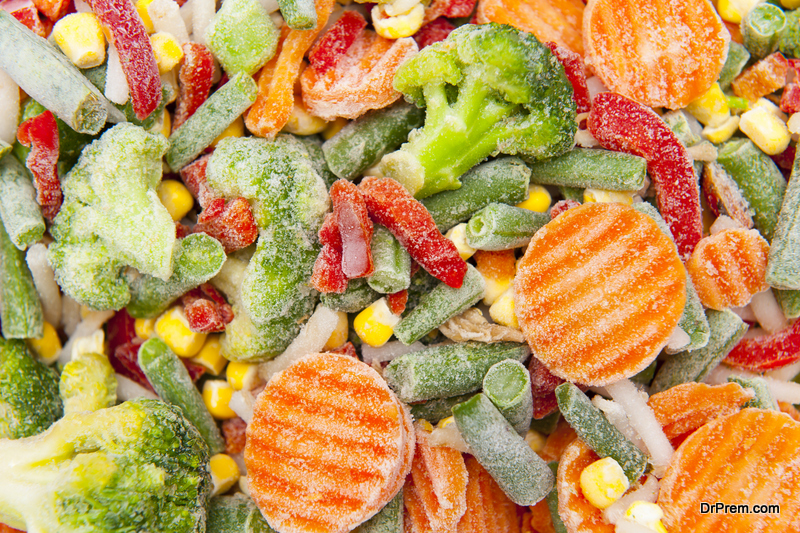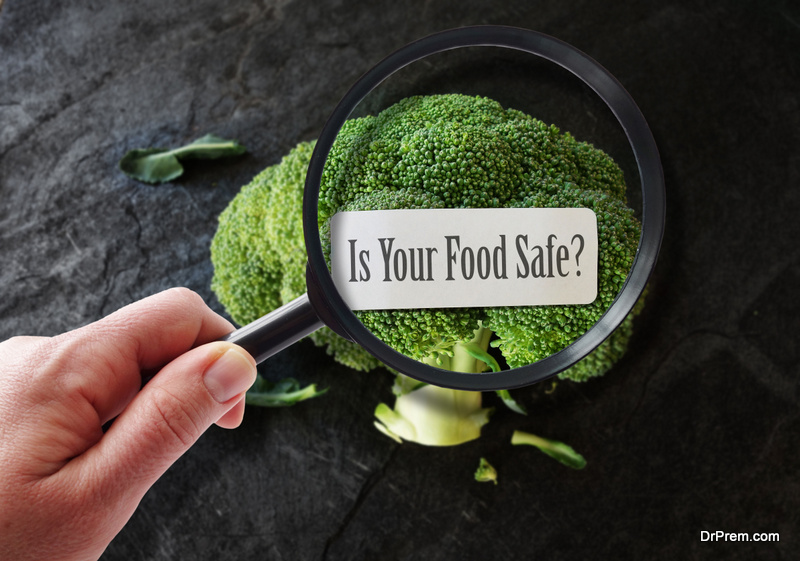With evolving consumer demands and shifting regulations, food safety is of utmost importance across the entire food industry. Safe food handling best practices must be incorporated into each phase of food production and supply chains to keep foodborne illness and harm at bay.
Having proper food safety procedures in place not only protects your products’ quality and company reputation but also shows that you put the safety and health of your employees and consumers above other factors. Following proper food safety procedures could also be the difference between a smoothly running business and costly downtime as a result of a failed inspection — or a chilling $25M fine.
Even at home, food safety should be a major priority. Safe food handling practices are well worth learning, lest you expose yourself or your loved ones to food poisoning. Industry jargon can sometimes get in the way of understanding the dos and don’ts of safe food storage, handling, and preparation.
Here we explore five key food safety terms you ought to know, whether you’re a consumer, industry newcomer, or seasoned professional.
1. Cross-Contamination
 Cross-contamination is one of the most disconcerting issues related to food safety, especially when it comes to preventing the spread of foodborne illness. It refers to contaminants (microorganisms, allergens, etc.) being transferred from contaminated equipment, surfaces, or from one food to other food.
Cross-contamination is one of the most disconcerting issues related to food safety, especially when it comes to preventing the spread of foodborne illness. It refers to contaminants (microorganisms, allergens, etc.) being transferred from contaminated equipment, surfaces, or from one food to other food.
Without strict measures, cross-contamination can happen easily, posing great health and safety risks for end consumers. In fact, cross-contamination is regarded as the main culprit of food poisoning and other food borne illnesses. According to the World Health Organization, food poisoning affects roughly 600 million people yearly worldwide.
The most common form of cross-contamination involves the transference of viruses, bacteria, and other pathogens (collectively called microbes) from contaminated surfaces, food, or food processing tools like slicers, utensils, and packing stations to uncontaminated food.
This transferral isn’t restricted to microorganisms; cross-contamination can involve an unwanted transfer of toxins, chemicals, or food allergens such as gluten, peanuts, or dairy.
There are three major types of cross-contamination:
Human-to-food: This type of cross-contamination occurs when contaminants on someone’s hands, clothes, or body are transferred to clean food during handling or preparation.
Food-to-food: Mixing non-contaminated foods with contaminated food can lead to food-to-food cross-contamination, allowing harmful allergens, bacteria, toxins, or viruses to spread. This is perhaps the most recognized form of cross-contamination
Equipment-to-food: Pathogens can stay alive for quite some time on equipment and surfaces such as food conveyors, utensils, countertops, slicers, and so forth. These can move oodles of bacteria or viruses to food at any stage of food production and supply.
Equipment-to-food cross-contamination occurs more frequently than you might think, often with devastating outcomes. For example, listeria-tainted meat slicers caused an outbreak of listeriosis in Canada in 2008, resulting in at least 22 deaths.
2. Allergens
Allergens are generally proteins but can include other foods that result in abnormal allergic reactions when consumed. In some people, the body wrongly perceives allergens as harmful foreign substances and launches an aggressive immune attack.
An immune attack can lead to a range of reactions from mild symptoms like itchy rashes to fatal complications like anaphylaxis. This is a severe breathing complication from food allergies that results in around200 deaths in the US every year.
Allergens can be a serious food health and safety hazard. For this reason, regulatory agencies like the FDA require food processors to label products accordingly if they contain any allergens. Any item that includes ingredients known to be or include allergens must be listed. This includes ingredients in preservatives, stabilizers, and other additives found in the end product.
As of this writing, the US recognizes a group of eight food allergens, known as the Big 8, deemed responsible for approximately 9 out of 10 food allergic reactions among Americans, as per CNBC. The Big 8 are: eggs, shellfish, fish, soy/soybeans, milk, wheat, peanuts, and tree nuts (e.g., pecans, cashews, walnuts, pistachios, Brazil nuts, hazelnuts, macadamia nuts, etc.).
Note, however, that some independent food safety associations may expand their scope to cover other not-so-rampant allergens, such as mustard, sesame, lupine, celery, and mollusks (oysters, mussels, etc.).
3. FDA
 The Food and Drug Administration (FDA) is a federal government agency operating under the U.S. Department of Health and Human Services. It protects the public health by ensuring the security, efficiency, and safety of food, biologics, human & veterinary drugs, and medical devices.
The Food and Drug Administration (FDA) is a federal government agency operating under the U.S. Department of Health and Human Services. It protects the public health by ensuring the security, efficiency, and safety of food, biologics, human & veterinary drugs, and medical devices.
One interesting fact to note is that the oversight of food safety in the US is primarily apportioned between two federal agencies: the United States Department of Agriculture (USDA) and the FDA. The USDA is largely responsible for the safety of poultry and meat, which account for about 20 percent of the US food supply.
The FDA oversees just about anything else, including animal feed, pet food, and human food. The FDA is responsible for ensuring the safety of around 80 percent of the country’s food supply. This is no small feat! This task is especially daunting when it comes to monitoring food safety issues and preventing foodborne illness.
Following the signing of the FDA Food Safety Modernization Act into law in 2011, the Food & Drug Administration has turned its focus from predominantly responding to and mitigating foodborne diseases to preventing them.
4. HACCP
Dickson notes that Hazard Analysis and Critical Control Points (HACCP), is an internationally recognized method of identifying and managing the risks related to food safety. Rather than respond to a food safety problem after the fact, the HACCP is a risk-based strategy that helps to prevent food safety-related issues.
According to HACCP, preventive measures should be implemented across several key stages of food production, packaging, transport, and on down the rest of the supply chain. If followed correctly, these steps should prevent the physical, chemical, and biological contamination of food, right from the farm to the consumer’s table.
5. Cold Chain
 This term refers to the system in the food supply chain that involves freezing or refrigeration of temperature-sensitive foods from the point of manufacture to the point of sale. It involves the storage and transportation of perishable food down the supply chain to maintain its integrity, i.e. prevent contamination and spoilage.
This term refers to the system in the food supply chain that involves freezing or refrigeration of temperature-sensitive foods from the point of manufacture to the point of sale. It involves the storage and transportation of perishable food down the supply chain to maintain its integrity, i.e. prevent contamination and spoilage.
Conclusion
Food safety is a concern that touches the entire food industry, from food processors and packagers to handlers and consumers. That’s why it is important that families, as well as regulators, are familiar with important food safety concerns like allergens and cross-contamination, as well as regulators and regulatory frameworks such as HACCP and FDA so you can stay ahead of the pack.
Article Submitted By Community Writer


